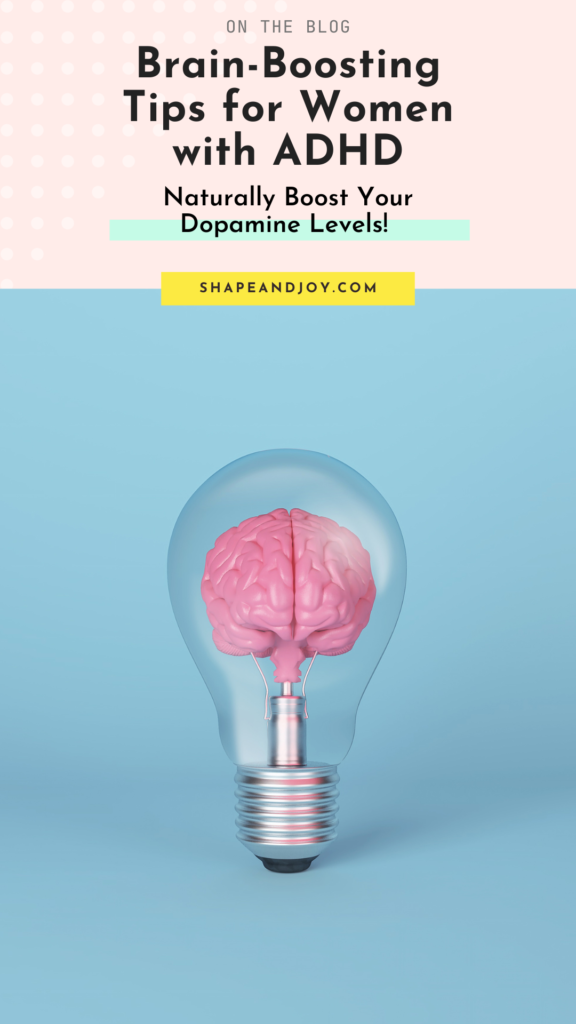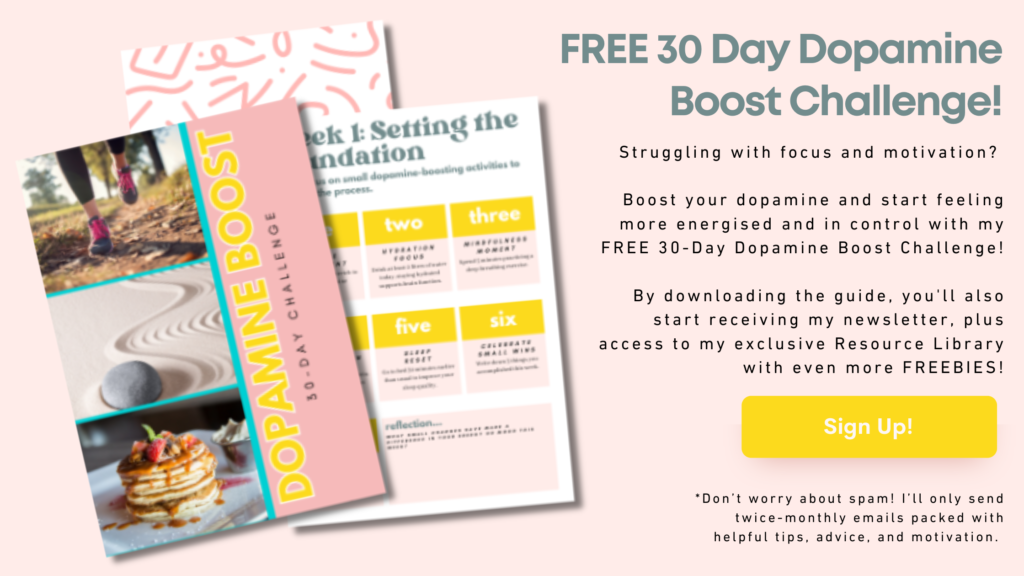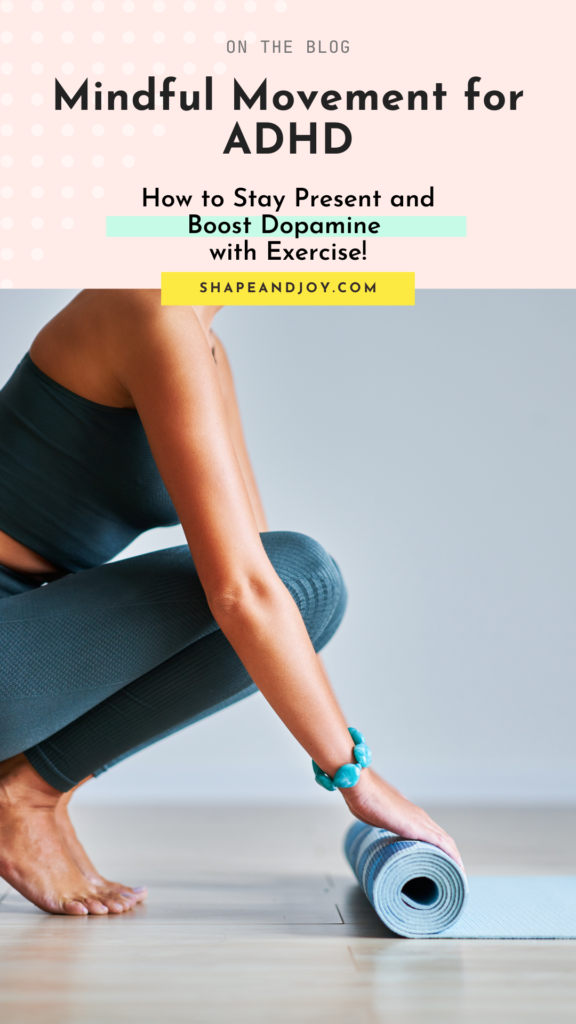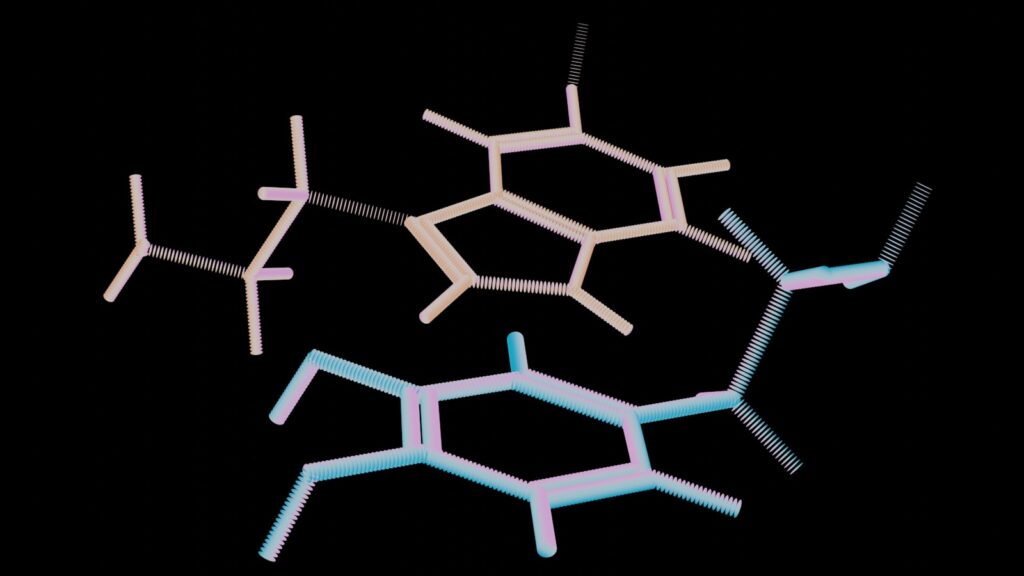Brain-Boosting Tips for Women with ADHD: Nutrition, Exercise, and More
Ever feel like your brain’s stuck in a fog, bouncing around a million thoughts without actually landing on any? You’re not alone, especially if you’re a woman with inattentive ADHD (like me), trying to adult in a world that seems wired for people with supercharged dopamine levels. But listen, there’s good news. With a few brain-boosting tips for women with ADHD, you can actually make small changes in your nutrition, exercise, and daily habits that’ll help turn that mental mayhem into something more manageable.
So, in this post, we’ll cover:
- Nutrition hacks for focus
- Exercise ideas for energy and mental clarity
- Lifestyle tweaks to support ADHD brains

1. Nutrition Hacks for Focus
Avoid the Sugar Rollercoaster
First things first, let’s talk sugar. If you’re riding the sugar rollercoaster, it’s no wonder your brain feels like it’s constantly crashing.
The thing is, quick sugar highs give you that burst of energy but leave you wiped out an hour later – not ideal when you’re trying to focus, right?
Ditch the refined sugars for slower-burning carbs like oats or sweet potatoes.
Trust me, your brain (and blood sugar) will thank you.
For more on how to keep your meals simple and balanced, have a look at my post, “Simplify Nutrition With These 5 Easy Tips.“

The Power of Protein
Protein isn’t just for bodybuilders trying to bulk up.
Nope, it’s a brain fuel!
Starting your day with a protein-rich breakfast – think eggs, Greek yoghurt, or even a protein smoothie – can help reduce impulsive snacking and keep your mind sharper for longer.
Protein helps stabilise your energy, so you’re not constantly battling that afternoon slump.
Omega-3s for Mental Clarity
Ever heard of omega-3s? They’re like the VIP tickets for brain health!
These natural sources of dopamine, found in fish, chia seeds, and flax, can work wonders for focus and clarity.
Omega-3s are particularly beneficial for women with ADHD, helping with mood regulation and reducing low dopamine symptoms.
If fish isn’t your thing, look into supplements – your brain deserves the VIP treatment, after all.

For a deeper dive into which foods can keep you full and focused, check out my post on “Satiating Foods: 5 Foods High On The Satiety Scale.“
Pro Tip: Try a balanced snack like apple slices with almond butter. It’s got that perfect mix of carbs, fats, and protein to keep you steady and focused.
2. Exercise Ideas for Energy and Mental Clarity
Why Movement Matters for ADHD Brains
Exercise isn’t just about toning up or working off that cheeky snack (although, hey, nothing wrong with that!).
For women with ADHD, exercise is one of the healthiest ways to get dopamine – it’s like a natural, no-prescription-required dopamine boost.
Studies show that physical activity can help improve focus and mood by retraining your brain to release more of that feel-good stuff. These exercise-based Brain-Boosting Tips for Women with ADHD can be a game-changer.
If finding motivation to move feels impossible, give “Why Motivation (Alone) Doesn’t Work For Weight Loss“ a read. It’s packed with mindset hacks that’ll help you stick to a routine, even when motivation is low.

Find Joy in Movement
Now, here’s the trick – don’t force yourself into a workout you hate. The key to consistency is enjoyment!
Try ADHD-friendly workouts like dance, brisk walks, or quick-circuit sessions. Anything that gets your heart pumping and feels like fun rather than a chore.
Remember, this isn’t about being the gym bunny; it’s about finding ways to move that genuinely lift your spirits and boost your brain.
For more ideas on how to make exercise enjoyable and sustainable, head over to my post, “7 Joyful Movement Ideas That Will Make Exercise Exciting!“
Integrating Movement Daily
Got five minutes? Perfect! Fit in little bursts of movement throughout your day.
A quick jog on the spot, a dance in your kitchen, or even a brisk walk around the block can make a big difference.

Think of it as micro-dosing on exercise – you don’t need hours at the gym to feel the benefits.
Quick Tip: Schedule 5-10 minute movement breaks after focused work sessions. It keeps the mind fresh and your dopamine levels topped up.
3. Lifestyle Tweaks for Mental Focus
Sleep as a Non-Negotiable
Sleep might just be the biggest unsung hero for ADHD brains. Skimp on it, and you’re almost guaranteed a foggy day ahead.
Building a calming bedtime routine isn’t just for kids; it’s a game-changer for adults, too! Try winding down with a warm bath, a good book, or a bit of journaling to quiet that racing mind.
These simple lifestyle tweaks are some of the most effective Brain-Boosting Tips for Women with ADHD.
For more on how sleep, routines, and small daily changes can improve mental clarity, you might like “10 Simple Tricks for Making Exercise a Daily Habit.“

Mindfulness & Mental Health
Mindfulness can sound a bit airy-fairy, but stick with me here. For inattentive ADD women, mindfulness isn’t about sitting cross-legged and chanting ‘ohm’ (unless you’re into that!).
It’s about being present, even if it’s just for a few minutes.
Try deep breathing, a quick meditation app, or a simple grounding exercise to help improve your brain’s focus and calmness.
Managing ADHD can feel like a balancing act, but movement can actually be a great tool for grounding and focus. For practical, ADHD-friendly movement tips, head to my post on mindful movement and see how small changes can make a big impact.
Structure for Success
Alright, here’s where we talk about ‘organisation’ without losing the will to live.
Having structure in your day can actually free up mental space for other things. Keep it simple – use a planner, set reminders, and add in just enough structure to keep you grounded without feeling trapped.
Start small and build routines that actually fit your lifestyle.
And if you need some practical guidance on forming a strong mindset to support these changes, check out my post on “Mindset Matters: Change How You Think To Lose Weight.“

Summary: Look, these Brain-Boosting Tips for Women with ADHD aren’t about doing everything perfectly. It’s about trying small, consistent tweaks and building habits that work for you. You’ve got this – one step, one snack, one dopamine-boosting move at a time.
Conclusion
There you have it! Boosting your ADHD brain isn’t some impossible mission – it’s about taking small, manageable steps in your nutrition, exercise, and lifestyle that add up over time.
By ditching sugar highs, adding in protein and omega-3s, finding movement that makes you smile, and building a routine that works for you, you’re giving your brain the support it deserves.
Why does this all matter? Because every bit of focus, every burst of clarity, and every grounded moment is a victory.
You’re not just fighting for attention; you’re building a life that embraces your unique brain – with all its quirks and brilliance.
So, are you ready to put these tips into action? Start with one tweak today, and see how it feels. Remember, progress is all about consistency, not perfection.
Now, let’s keep the conversation going!
What’s one brain-boosting habit you’re excited to try? Comment below or share this post with someone who might need a little boost – because we’re all in this together, and your journey just might inspire someone else.

Further Resources
Studies
Nutrition Hacks for Focus
Avoiding Sugar: High-sugar foods can negatively impact ADHD symptoms, as spikes in blood sugar followed by rapid declines can exacerbate attention difficulties. A garden-based nutrition intervention that limited sugar, refined grains, and artificial additives led to reduced ADHD symptoms in students, showing the benefits of consistent dietary changes (Malavika et al., 2019).
Protein Intake: Protein can stabilize blood sugar and support sustained attention. Research indicates that diets balanced with high-protein foods can help manage impulsive behaviours and maintain energy levels in ADHD, particularly beneficial for individuals experiencing hyperactivity and inattention (Pelsser et al., 2017).
Omega-3 Fatty Acids: Omega-3 supplements, particularly those with eicosapentaenoic acid (EPA) and docosahexaenoic acid (DHA), show consistent benefits in reducing ADHD symptoms, especially in the areas of attention and mood regulation (Sonuga-Barke et al., 2013) and (Hurt & Arnold, 2011).
Exercise Ideas for Energy and Mental Clarity
Exercise as a Dopamine Booster: Physical activity provides a natural dopamine boost, which is crucial for ADHD brains. Studies have shown that regular aerobic exercise enhances dopamine release, improving focus and mood over time (Fotoglou et al., 2022).
Micro-Movement Breaks: Integrating short, frequent movement breaks can also support mental clarity and dopamine regulation, providing benefits similar to longer exercise sessions. Short bursts of activity help reduce mental fatigue and increase sustained attention (Ahmed & Salem, 2021).
Lifestyle Tweaks for Mental Focus
Importance of Sleep: Quality sleep is essential for ADHD management. Studies emphasise that sleep deprivation can exacerbate ADHD symptoms, particularly impacting attention and impulse control (Bosch et al., 2020).
Structured Routine: Establishing routines and using organizational tools can enhance focus and reduce ADHD-related chaos. Structure provides mental clarity by reducing cognitive load, an approach recommended in non-pharmacological ADHD management (Pinto et al., 2022).




